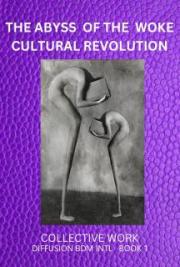COMFORT
WOMEN
“In
Search
for
Understanding”
Reflection
Essay
Shanna Todd
December 16, 2011
EXPC-6005 Gender and Peace Studies
Jacobo Schifter, Ph. D
Table of Contents
Introduction………………………………………………………………………………………………..3
“Comfort Women” Issue…………………………………………………………………………………3-4
Understanding……………………………………………………………………………………………4-7
Conclusion…………………………………………………………………………………………………7
References………………………………………………………………………………………………….8
2
Introduction
The Gender and Peace Studies course at the University for Peace focuses on how gender is intricately intertwined in every aspect of our lives. Throughout the course we have discussed the complex definition of “gender” and its relationship with family, science, war, human trafficking and prostitution, as well as religion. In entering this course, I had little understanding of the large role gender played in our lives. However, as I found myself seeking understanding on different global issues involving women, I realized that the only way for me to have a true understanding of how and why these acts of violence and oppression continue to happen in today’s society was to seek out the underlying premise of these issues, which was gender. One is the “comfort women” issue, which I have become very involved in as an active volunteer after a visit to the House of Sharing, a museum dedicated to sexual slavery, and residence to former “comfort women”. Only when I have a gained a deeper understanding of gender’s role in the world, will I feel that I am able to help in searching for ways to resolve these atrocities.
“Comfort Women” Issue
During the second Sino-Japan war, the Japanese invaded the Chinese capital of Nanking in 1937.
Now known as the “Rape of Nanking”, the Japanese inflicted a mass amount of violence as they looted, set fire and brutally attacked and raped the people of Nanking. Officials of the Japanese military were nervous that if acts like this continued, international attention would be brought and that they would be met with an increased defense as they continued to work their way through South East Asia. This incident was the catalyst which ignited the expansion of the comfort station system (Rosello.Pg 160), initially set up in 1932 with official documents stating Shanghai as the first station. The reasoning for this was to raise morale among troops, maintain discipline, and the prevention of violence of looting, arson, rape, STD’s, and espionage. (Yoshiaki. Pg 56) It is estimated that 50,000 to 200,000 women from more than nine countries in South East Asia were persuaded, tricked, and abducted into this system of military 3
sexual slavery, with the predominant number coming from the colonized country of Korea. These women ranged in age from about 11 to 30 years old and were forced to service up to 60 men a day.
Though these violent incidents against women happened over 60 years ago, it took almost 50
years for them to come to light. The perpetrators, victims, and witnesses all stayed silent for years, even when documented evidence was right in front of them. Visitors to the House of Sharing find themselves numbed by the violence committed against these women, and are forced to ask; how is it that an act to this magnitude could go unvoiced for so long? It is this question that I would like to evaluate upon completing this course.
Understanding
First, I would like to look at the “comfort women” and the circumstances that have inhibited them from speaking out about the injustices set upon them. Korean history and tradition are based on the ideas of Confucianism, which is based on the relationship of Heaven and earth. The balanced relationship of the two is a yin and yang, where yin is expressed to be dark, earthly, and receptive representing the female (inferior) and yang expressed through light, active, strong, and heavenly representing the male (superior). Confucianism sees this relationship as the creation of family, which is deemed sacred. The women’s position is viewed to be subordinate and subject to their father as a daughter, to their husband as a wife, and to their son. (Weisner-Hanks. Pg 115) These women in a Confucian and patriarchal society, prior to their experiences, were seen as extensions of their fathers and viewed their futures as a wife and mother. Yet these dreams of a bright future were torn away from them by these acts of violence, their highly valued chastity stolen. Due to the idea of their sexuality, belonging to their father and then their husbands, many felt immense “shame.” For these women (girls at the time) to speak of these events, would not only bring shame on them, but their families. Many of those who did survive found it difficult to enter into relationships, both from the terror that was inflicted upon them and for the fear of their experiences being known. Of the women who did marry, many found themselves victims of domestic 4
violence once their husbands learned the truth. The acts of violence were not seen as committed against these women, but as a betrayal of their husbands. Those women that did not endure physical abuse suffered verbal abuse. A former “comfort woman”, Kim Hak-Soon got married but lived with the stigma for decades. Her husband said, “She was a filthy woman, who’d had sex with soldiers.” (Yoshiaki, Pg.
196) Due to the intense verbal abuse and constant reminder of her past, it was not until 1992 when Kim Hak-Soon finally came out about her experiences. She stated that she finally felt free to speak, as her husband had passed away.
Why did family and friends of these girls who disappeared, as well as the Allies who saw them during the liberation not speak up? An insight into this question could be seen through Mun Ok-Chu’s, a former “comfort woman”, account of her aunt screaming at her saying, “Who would have thought that a daughter like you would come from a yangban(meaning aristocratic) family?” Hwang Kum-Ju disclosed that “I get sick of thinking about how I can live out my life and then die without being despised by other people and without suffering from illness as well.” (Yoshiaki. Pg 196) Another way to better comprehend this alarming silence would be to view the situation as patriarchal, which both nations were at the time, with Japan, as the masculine colonizer, and Korea, as the colonized feminine. In this light we are able to see the domination of not only over Korean women, but Korea as a nation. Japan’s acts were an act of power, domination and strength over the inferior Korea. For Korean men, whose priority was to keep their women safe, this was an embarrassment, an emasculation. Interestingly, Korea’s time under colonial rule is something that is not discussed and is merely viewed as “matters of the past.” (Kim, Choi.
Pg 124) Documentation was right in front of them for years, as in the case of Pangsan Elementary School in Seoul. Reported in 1992, on student records, it clearly stated that several female students aged 12-14
years old were drafted into chongsindae (military comfort system). These documents were exhibited for some time in front of the school with no inquiry. (Kim,Choi. Pg. 124-125) As for the allies, I cannot speak on confirmed information, but can hypothesize the following. When the allies came in, they found in the POW camps women mixed with soldiers, who did not speak either the local language of the area or 5
Japanese. At this time, transportation was limited and the idea of these poor, young, uneducated girls traveling from Korea to places such as the Philippines would be incomprehensible. Though the soldiers may have spoke about these women to their superiors and made further inquiries, the situation was somehow silenced.
Throughout history, the socially constructed world of war sees women as spoils of war and the violence inflicted upon them as inevitable. The United States at the time was seeking to have an economic ally in the Far East, to curb Russia’s increasing power, and thus did not persecute Japan to the fullest for war crimes committed. These women simply became another casualty of war and a hidden secret.
Although more than 19 years have passed since these secrets have been divulged, no resolution is in sight. Many of these former “comfort women”, now in their 80’s and 90’s are still judged through the eyes of a masculine society through both media and the government. This week marked the grandmothers’ (given as a sign of respect) 1000th protest outside the Japanese Embassy, here in Seoul.
Most media coverage spoke of them as “victims” and “old women”. Due to the male predominant culture, these women could not be seen as anything other than a victim. As these women are old and no longer sexually appealing to men, they are no longer regarded as important to society. In spite of these stereotypes, many of us supporters do not view them as victim. On the contrary, we see them as survivors.
Not as old women but strong courageous women who are standing up not just for themselves, but for women around the world.
The governments also play into this social construction as Japan, still today, is the superior in the eyes of many. President Lee Myung-Bak stated early is his presidential term that he would not bring this issue up to Japan, in fear of ruining economic and diplomatic relations with them. President Lee has met with Japan on several occasions, and even with the urging of the Constitutional Congress, who has concluded that by not resolving this issue it is a violation of their human rights, President Lee has still 6
said nothing. President Lee does not want to upset the country that still has influence over Korea today, thus he abides(playing the perceived feminine role) by this underlying phenomena sacrificing the women for the good of the country(the family) once again.
Conclusion
The issue of “comfort women”, among others, infects the world we live in, as the rights of women are violated throughout our modern day society. The events surrounding this issue are not isolated and still continue. The “comfort women” system does not exist today, however in its place there are “camp towns” to service military which continue to thrive even today. These acts of violence, exploitation and ignorance will not cease until we as a society are educated and understand the importance of an engendered society, where women and girls are given the same rights as men.
Although I do not feel that I have become an expert in the area of gender upon completing this course, I do have a better grasp of its role and am more able to identify its underlying causes of violence against women.
7
References
Kim, Elaine H. and Choi, Chungmoo. (1998). Dangerous Women: Gender and Korean Nationalism.
Routledge:New York and London.
Yoshiaki, Yoshimi. (2000). Comfort Women: Sexual Slavery in the Japanese Military During World War II.New York. Columbia University Press.
Weisner-Hanks, Merry E. (2011). Gender in History:Global Perspectives. Chapter 5. Religion. Wiley-Blackwell.
Rosello, Cristina Lope Yl. (2011). Disconnect: The Filipino Comfort Women. Gates Publishing House.
Quezon City.
8







